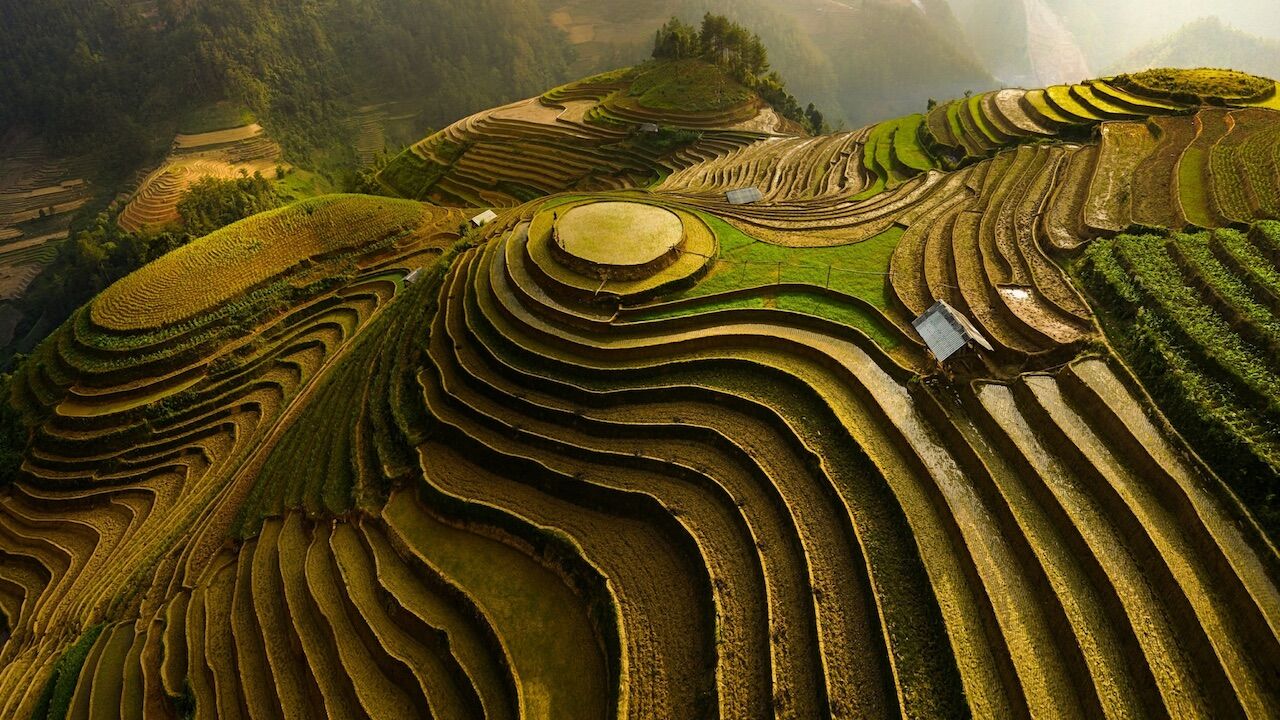Otali Equoni Terrace Farms
One of Wakatakte’s biggest features is the Equoni Mountain Range and the large terrace farms that sit there. Their primary use is agricultural, to supply food and animal products to the kingdom’s residents. The grand view of the terrace farms set into the mountains also works as a tourist attraction, although to a less profitable extent.
These terrace farms are much larger plots than the farmsteads lining the banks of the Otali River. Where the riverbanks are more of a merchant hub because of port-stops, the Equoni Mountains have more space to accommodate more people. Most of the people that move into the mountains are miners rather than farmers, but farmers often move to the mountains to take advantage of the vacant space.
The flattened steppes of Wakatakte’s terrace farms grow a large variety of mountainous flora, including many fruits and vegetables and their high-altitude variants. The way the Astorian kingdom irrigates all of their fields is through rainwater, snowmelt, and ice cap runoff. The freshwater from the ice caps flows down through the mountains and then through certain channels dug into the sides of the mountains. These channels then split on each terrace level to surround each plot and water it on all sides. For lower altitude terraces, rainwater is more commonly seen, while higher altitude terraces see more snowmelt.
The most common types of crops that these terraces grow are root vegetables like potatoes, carrots, and beets; gourds like pumpkins and squashes; and certain stemmed varieties like corn, beans, and peppers. These vegetables utilize larger plots, so smaller plots are used to house herbs and spices. Examples of herbs might be things like mint, tarragon, and anise; while spice plots might have things like peppercorns, bay, and mustard planted. Sometimes wildflower plots are separated to prevent the seeds from traveling to other plots and taking root, however this practice widely varies depending on the farmer. The types of wildflowers planted at any given time can vary. Some species like daisies and violets are planted mainly for retail, while other species like dandelions and mallow are planted mainly for culinary and medicinal use.
Flora becomes less diverse and less frequent higher up. Only the hardiest plants survive above a certain altitude, as other species gradually die out. Some of these rare plants are seen as “spiritual cleansers” and “exotic remedies” in southern areas due to their rarity in the area and certain psychoactive qualities they possess. Because of this, their sale has been prohibited in certain kingdoms, although that doesn’t deter people from selling them under the table.
These terrace farms also have storage for extra product—either above or below ground—as well as livestock pens onsite. These pens can vary in size depending on the kind of animal; ones for larger livestock that need the space to graze and spread out can take up entire mountainsides, while smaller livestock are usually confined to a few acres surrounding the farmstead. The most common livestock on these farms are wool-producing breeds, milk-producing breeds, and meat animals. Companion animals and beasts of burden are usually assigned to their own pen attached to the home, or sometimes live in the home.
Since part of Wakatakte is set high in the mountains, there is a risk of encountering wild mountainous creatures. These creatures can range from feisty Pialjas—small gecko-like creatures that rest on vegetation to camouflage themselves while photosynthesizing—to birds of prey, to the dreaded and feared Devalis—large, scorpion-like creatures that secrete a freezing mist if threatened.




Comments